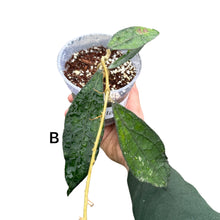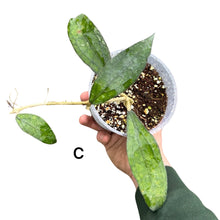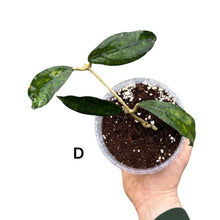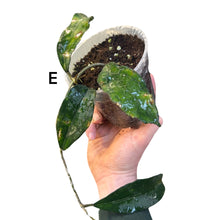Hoya clemensiorum is part of the Apocynaceae family and its native to Borneo where it grows as a liana in the wet tropical biome. Hoya clemensiorum was first collected by Ted Green at the Rafflesia Centre in Sabah, 199. It is part of the Finlaysonii Complex, leaves are large and glabrous with raised, pinnate venation, leaf tips are attenuate (tapering gradually to a narrow tip). Hoya clemensiorum has a terrestrial to epiphytic growth habit and is found in upper hill forest to lower montane forest (800-1200m) climbing to reach the crowns of the trees along the riverbanks.
The inflorescence is laterally held, umbel typically contains between 10-20 flowers, corolla lobes are reflexed and cream at the centre, changing to a brown red on the outside, corona is white. Bloom is said to have a pleasant musky fragrance.
Green initially named it Hoya clemensii, to honour J & M.S Clemens who were botanisers in Sabah during the 1930’s, however this was later changed to fit in with the International Code of Botanical Nomenclature, since it was named after two Clemenses it ought to be Hoya clemensiorum. Fraterna 14(3): 12 (2001).
Light: Bright indirect light, meaning the plant sees the sun for 0-4 hours per day - this could be through trees or a translucent curtain, it’s important for the plant to see the sky in order to thrive. This plant will sunstress when exposed to direct light.
Water: H. clemensiorum is prone to root rot, allow the potting mix to dry out completely before watering.
Potting mix: Our potting mix would be ideal with some added coco chips.
Fertilising: Feed every couple of waterings with a well balanced fertiliser; you can further dilute fertiliser than the recommended amount but never add more. Some people opt to use a higher nitrogen fertiliser to stimulate foliar growth then changing to a fertiliser that is rich in phosphorus content to encourage bigger and fuller blooms.
Temperature: 21-35˚C.
Humidity: 60% and above with good air circulation.
Hoya aren’t considered toxic, however, they may make your pet or child vomit if ingested, keep out of reach just to be safe.
12cm potted plant in coco coir, coco chips, perlite and pine bark.
You will receive the exact plant in the photograph.
For further information about Hoya, check out our blog.







